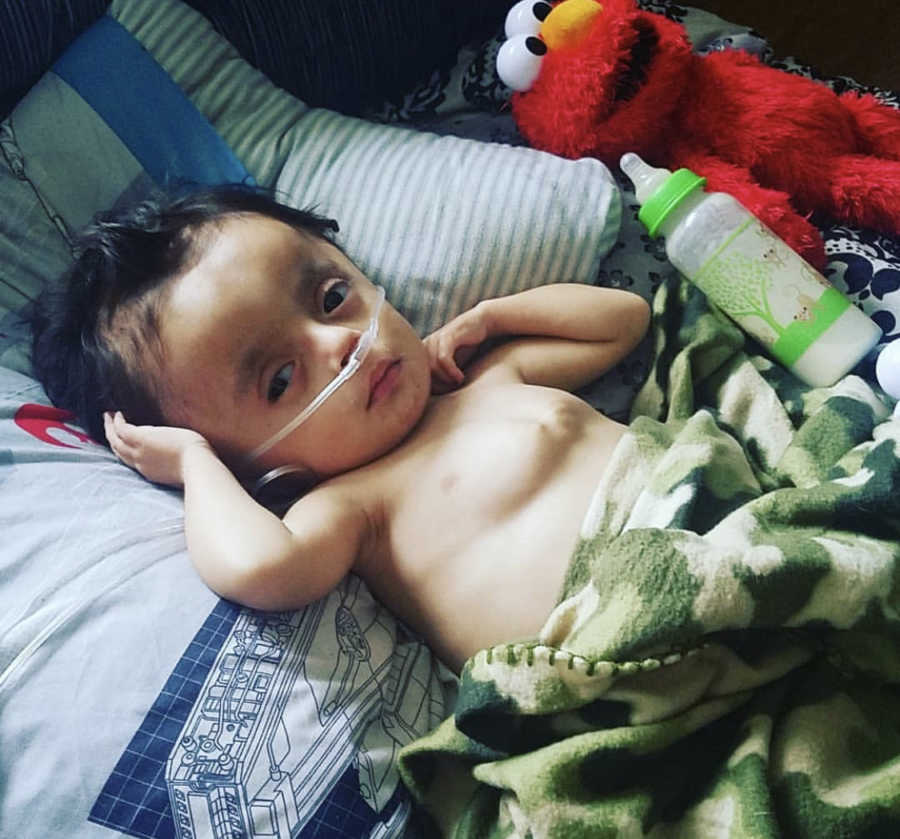
some cases of OI type VII resemble OI type IV in many aspects of appearance and symptoms. Recessive inheritance probably accounts for fewer than 10 percent of OI cases. There is no evidence of a recessive form of mild OI. Recessively inherited OI has been discovered in people with lethal, severe, and moderate OI. Two recessive types of OI, types VII and VIII, were recently identified. It is moderate in severity and similar in appearance and symptoms to OI Type IV and is distinguished by a characteristic mineralization defect seen in biopsied bone. Mode of inheritance is unknown. calcification of the interosseous membrane between the radius and ulna restricts forearm rotation and may cause dislocation of the radial head. large hypertrophic calluses at the fracture or surgical procedure sites. Similar to Type IV in appearance and symptoms of OI. sclerae are often light blue in infancy, but the color intensity varies - the sclerae may lighten to white later in childhood or early adulthood. bones fracture easily, most before puberty. Type IV can range in severity from relatively few fractures, as in OI Type I, to a more severe form resembling OI Type III. Clinical features include: People with OI Type IV are moderately affected. sclera have a blue, purple, or grey tint. the altered structure of the growth plates gives a popcorn-like appearance to the metaphyses and epiphyses. rotoscoliosis and vertebral compression fractures. bones fracture easily fractures are often present at birth, and x-rays may reveal healed fractures that occurred before birth. at birth, infants generally have mildly shortened and bowed limbs, small chests, and a soft calvarium. The degree of bone fragility and the fracture rate vary widely. The majority of OI Type III cases result from dominant mutations in type I collagen genes. Clinical features include: 
OI Type III is the most severe type among children who survive the neonatal period. numerous fractures and severe bone deformity.

It results from new dominant mutations to type 1 collagen genes. Clinical features include: Type II is the most severe form and is lethal at or shortly after birth mostly due to multiple rib fractures and pulmonary hypoplasia. brittle teeth ( dentinogenesis imperfecta) differentiates between the two subtypes IA (without) and IB (with).sclera often have a blue, purple, or grey tint.general bone fragility and predisposition to fracture.It demonstrates autosomal dominant inheritance. Type I is the commonest form (accounting for up to 50% of all cases) and is fortunately also the mildest form. Further detail can be found on the Osteogenesis Imperfecta Foundation website 1,2,4. It has since been modified due to the advance in genetics, with the following classification described by Glorieux and Rauch.

Osteogenesis imperfecta was initially classified by type according to a scheme developed by David Sillence, Australian clinical geneticist, based mainly on family history, clinical presentation and radiologic findings. The several forms of osteogenesis imperfecta (OI) have been classified, representing wide variation in appearance and severity, and clinical features vary widely not only between types but within types.







 0 kommentar(er)
0 kommentar(er)
